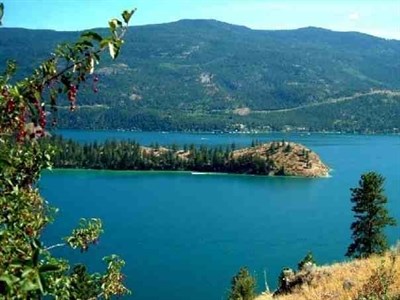
Image Credit: Source/ SPKL Facebook Group
January 04, 2013 - 3:32 PM
A new study by the Okanagan Collaborative Conservation Program has revealed some troubling news about the health of Kalamalka and Wood Lake. The presence of disturbed habitats—those modified by human use—are unable to adequately support the plants and animals living within them. Susan Latimer, a representative of OCCP, says these deteriorated habitats are comprising more and more of the lake every year.
"The rate of change from a low or moderate level of impact to a high level of impact is about 2.3% per year," Latimer told Greater Vernon politicians Thursday.
The lake provides drinking water, recreational purposes, and an attractive backdrop with its famous aquamarine glint, which is caused by fluctuating calcium carbonate deposits.
Concern for Kal Lake is nothing new; Save Our Lake and Friends of Kal Park have made noise about the lake's degradation for many years. The Society for the Protection of Kalamalka Lake (SPKL) was formed in 2008 by concerned citizens to "protect the quality and health of the Kal Lake Watershed for all future generations, so that all user groups may enjoy the lake in an environmentally sustainable manner." The group helped fund the recent research done by the OCCP.
The OCCP began part one of a three step project in 2009 to determine what to do about disturbances—docks, boat launches, marinas— on Kal Lake. They started with a Foreshore Inventory and Mapping (FIM) initiative that recorded shoreline condition around the lake. The next step was to plug that information, and other data, into an Aquatic Habitat Index (AHI) to measure and compare the relative habitat value of different shoreline segments of the lake.
The results of the AHI were completed by the OCCP just before Christmas, and show that nearly half the lake has been significantly modified.
Latimer said 17.8% of the lake's shoreline ranked very high on the AHI, meaning it is considered to be essential habitat for fish and wildlife species.
Low areas, which Latimer described as places heavily altered by land development activities, came in at 6.9% while very low areas, those which are extremely modified, were shown to represent 7.2% of the shoreline.
Moderate areas, which have experienced some habitat alteration and may contain important habitats, such as shore spawning Kokanee habitats, were a bit of an eye-opener, Latimer said.
"We were quite surprised by how heavily disturbed the lake was in the (moderate) areas," Latimer said.
On the lake, Latimer said there are 360 docks, 213 retaining walls, 26 groynes, 11 boat launches, 10 marina rails, 9 marinas (of over 6 boat slips). She also said substrate modification has occurred on 40% of the shoreline.
Latimer said the AHI and FIM can help guide the conservation of the lake's high and very high habitat areas, while also advising the restoration of the degraded areas.
Greater Vernon Advisory Committee chair Mike Macnabb pointed out that many lakeshore property owners are likely not aware of the environmental problems their docks are causing, and suggested the info be sent out to them. Latimer said the information would eventually be posted online for the public to see, and that the OCCP would consider sending property owners the information directly.
GVAC Director Jim Garlick questioned, "How are we going to work with boaters, property owners and everyone who uses the water supply?"
Garlick recalled enjoying the lake as a boy.
"It was much nicer when I was a kid," he said.
—Charlotte Helston
chelston@infotelnews.ca
(250)-309-5230
News from © iNFOnews, 2013